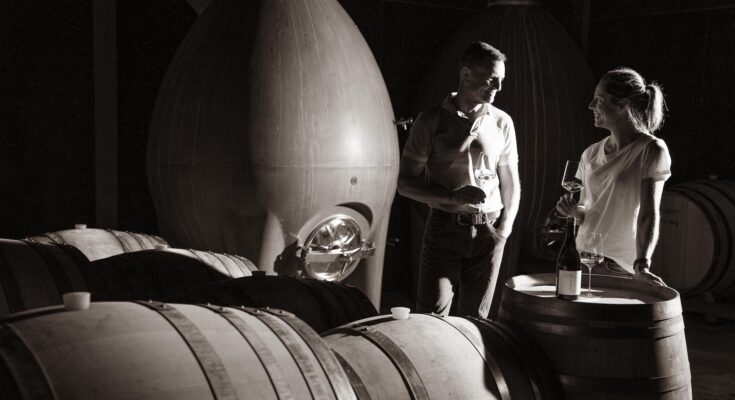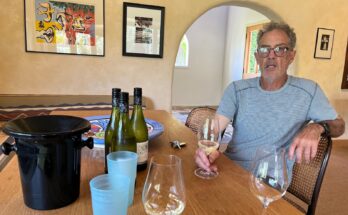On a beautiful late winter afternoon (post-Covid-19 lockdown), I caught up with Rod Easthope at his family vineyard / winery / homestead overlooking the river. It’s a beautiful spot, and he seems happy when I roll up for our meeting – who wouldn’t be – making his own family wines in this profoundly lovely part of the world…
Tell us a bit of background – how did you end up with this patch of paradise?
We planted about six years ago, and we’re both from vineyard backgrounds – our families had vineyards in Hawke’s Bay; although as growers in the truest sense of the word – the more grapes you can put on per hectare, the better. That doesn’t really tally with what we want to do, and Emma and I are not very good delegators… we don’t want anyone touching our vines! We hand pick all of this ourselves as well – just us and the kids. So lockdown was fine – we were just here doing our thing. There’s only a handful of people that we trust to grow grapes for us, anyway.
Winemaking follows on from that – it’s rudimentary, so during Vintage this is just a sea of open pots for open-top fermentation, and the rest of the year it becomes a bit of a Labelling Hall, Bottling Hall and Storage for equipment! We like having everything together. We store our own wines – hand label it; and, unusually for Hawke’s Bay, we bottle it all too. It really is ‘beginning to end’, and we do it all ourselves.
WineFolio: I was down in Central this year, and went to Prophet’s Rock where they are in the process of expanding their winery – it’s interesting to see these spaces before they filled up with equipment, barrels and so on – before they even get that ‘winery smell’ to them.
Rod Easthope: I always dreamed of a big concrete box with glass walls, sunk into the ground – had all those dreams. Here we are today, just a big farm shed with some insulation, drainage and concrete floors, and you’re away. When I was kid and my parents were selling to Matua and people like that up in Auckland, and there it was just really ramshackle sheds, and that’s how some of those dynasties began. It’s quite a New Zealand story really.
WF: Like George Fistonich with his one hectare, and an old white-painted shed, and he’d suck the wine out through a siphon and into the bottle!
RE: Those old stories are quite inspiring. We’ve got a couple of concrete eggs that we bought in from Sonoma, inspired by the ones made by a company called ‘Nomblot’ in France. On my travels in France, Italy and the 8 years in South Africa, I often worked with concrete tanks. And more recently on a trip to Argentina and Chile tried many wines from concrete eggs that I really liked. The eggs are about 110mm thick, and it’s almost like having an underground cellar for each wine.
It’s very still and temperature-even. The fact there’s no corners inside (in fact I was due to stir the lees but I didn’t in anticipation of you coming, so you’d get a clearer look at the wine) mean the lees stays in suspension for months and saturates the wine, so you can age the wine with low-sulphur and get that lees-contact effect.
So this is 2020 Chenin Blanc from the Two Terraces Vineyard. It’s 100% whole-bunch pressed and we don’t clarify the juice or add sulphur – just run it straight into the egg and let it do its thing. It sits on lees for about six months and we don’t want to see malolactic with this. I want to retain that quite electric acidity that you see with Chenin, so we knock it on the head and rack it all off.
WF: So, I’ve tried the Esk Valley, and just got Daniel Brennan’s of Decibel, so I’ll get yours and do them as a trilogy.
RE: It’s a nice little project to have. There’s a common thread with the fruit, but each winemakers stylistic difference is quite clear. I don’t imagine the wine will change much now from the egg to bottle. With it being cold in here and winter it will drop a tiny bit of acidity and some of that acid feel is dissolved Co2 as well – there’s just a little bit of a prickle there. We’ll lose an element of that, but we don’t deliberately cold-stabilise or protein-fine, so generally what we see in the egg gets to bottle pretty unadulterated. It’s difficult to characterise Chenin; the fruit dances between that tropical and citrus. And certainly in a ripe vintage like this, you see those yellow fruits.
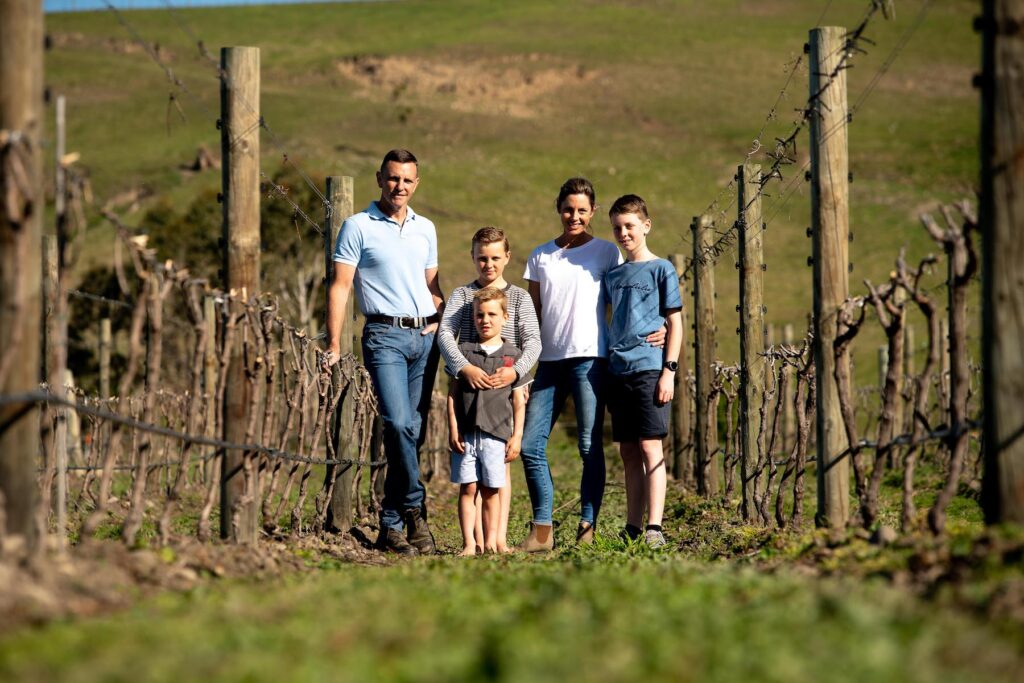
WF: Is getting the fruit right – is that the key to it?
RE: For me, about that 13% alcohol seems about right; and we want to achieve that naturally.
It’s very much that Burgundy model, of sticking to your knitting – exploring terroir through that one theme. With wild yeasts you’re never sure what you’re going to get – until you are confident about the flora you are getting from it. You can argue for terroir having a strong influence over a wines character or not. Burgundy is the greatest example, where you’ve got this patchwork quilt of tiny little vineyards. But at the end of the end of the day if you’re going to choose a good wine, you choose based on who made it. You don’t choose wine because it is a Grand Cru… you choose it by house not by vineyard.
This is the 2020 Skeetfield Vineyard Chardonnay – from one of the most highly prized blocks of Chardonnay in Hawke’s Bay. It’s fought over keenly by winemakers… but it’s owned by my best friend, so he has to give me a few rows!! The reason it does so well is that all the stars align in that one spot – quite rich soils, 28-year old Mendoza vines, riddled with leaf-roll virus so there’s almost a degenerate quality to the size of the fruit, but then you don’t really get Mendoza without that. It has never been irrigated and it just does what it does every year.
WF: I have heard of it obviously, and I think those vineyards of note, will only grow in awareness. For Hawke’s Bay it has to be about the quality, doesn’t it?
RE: It’s the only route for our sustainability! I can see every wine region around the world as it’s matured – it’s impossible to have the high end without the low end. I don’t think we should be too afraid of who’s doing what?
A lot of people worry about generic marketing of their region, and get highly involved in all that. I have no involvement with the rest of the industry really. Henderson’s reputation doesn’t affect Kumeu River? And average wine produced out of somewhere in Central Otago doesn’t affect Felton Road. I don’t feel affected by that generic stuff – just get on with what you’re doing – hopefully find a following for it.
This Skeetfield Chardonnay fruit makes us look very clever! We just whole bunch press, straight to puncheons, wild yeast, 25% new oak, and on lees for about 10 months. Rack, no fining, just coarse filtration and straight to bottle. We always want to tell the story of the vintage. It’s peaches and cream this year, but it does have that minerality element as well. In a warm year, like 2019, the Chardonnays can get a bit tropical and overblown.
WF: Yes, that’s a smart Chardonnay – it’s quite complete now already, for a 2019! A beautiful textural wine, and a low acidity. I like that you’re not afraid of showing the vintage – without adjusting to a ‘desired’ outcome. I haven’t had many ‘19s and I was hoping to try a few on this trip. I had Tony Bish’s Skeetfield just the other day which is rather delicious too. One of the reason’s I’m a little late getting here is that I popped in to see Kate Radburnd as I was coming through – and she’s only doing one price point and it’s quite top-end. Not doing an entry-point wine…
RE: It will always end up driving your business – second labels. It’s great to maybe have an entirely disconnected something to put barrels of this and that, that doesn’t quite fit it – into. But I’ve seen it enough times with wineries that have started a second label and it starts generating volume. It ends up driving the entire business and takes everyone’s attention away from what the original aim was. It’s a vortex and to be avoided.
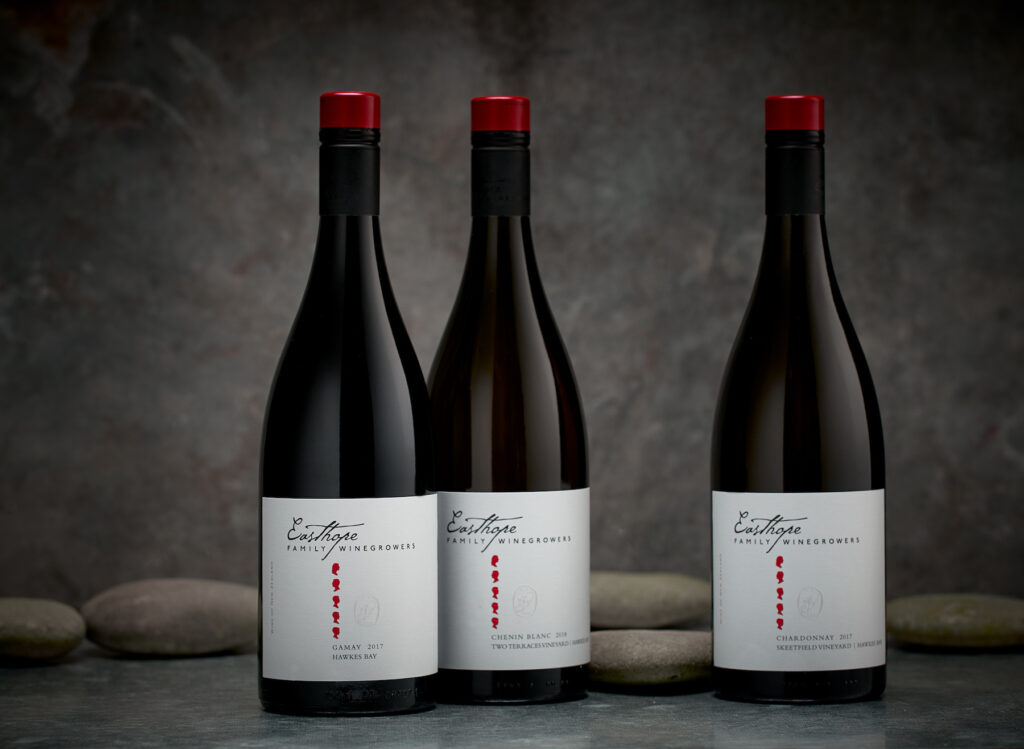
WF: You sound like you understand the market quite well?
RE: I’ve just seen all the mistakes I suppose – enough times, and so really what we’re doing here is trying not to repeat a lot of the things I’ve seen. As soon as small businesses gain complexity, they are doomed. If you explain it to someone like you for example, who’s really interested and they only just get it – can you imagine what the consumer, or two steps away like an export customer – you’ve lost them!? So an a firm ethos where you say ‘this is what we do’ and very rarely will you step outside that… people can get that, and they keep coming back.
This is some Gamay 2020, so very fresh off the block, and that’s off the Two Terraces Vineyard. It’s Clone 509 which is a French selection, and we bottle this separately and call it ‘stone-aged Gamay’. 100% whole bunch, foot-stomped and about two weeks on stems and skins, and then basket-pressed straight into the egg, and left on lees. No oak and then we bottle this un-sulphured, straight to bottle.
Gamay is a remarkable grape. Similar to Pinot in some ways, but it’s much more rigid in its expression. We’ve got five vintages now in bottle, completely un-sulphured, and they look as fresh as the day they were bottled. It’s an unusual grape.
WF: Do you think it will age, or is that drink-it-young style?
RE: No, it will age. I’ve been lucky enough to try a 1929 Morgon, and that’s pretty old. I’ve tried a lot of Cru Beaujolais and they age beautifully. Whether ours do? Time will tell, but the 2015 is great.
This 2020 is still to go through a bit of malo in the spring when things warm up a little bit. Bright, floral, almost primitive wild berry character. Overlaid with rose petal is what seems to emerge.
WF: “Smashable” I can see hipsters loving this.
RE: Yes, both of them. In New York style noisy narrow winebar, slightly chilled. Smash it.
WF: I like the style of Pinot, and Syrah to be honest, that’s lighter, floral and with a less extracted denseness to them.
RE: With Syrah there’s only 350 hectares planted in the whole of New Zealand. It makes a lot of noise, but its penetration in the entire world is incredibly small. Most New Zealand Syrah is consumed in New Zealand, so when we export the only thing people want from us is Sauvignon Blanc and Pinot Noir. Try and tag on a bit of other stuff but the world really doesn’t want it – yet.
WF: Do you not think that Hawke’s Bay is great at Syrah though – and could be sensational?
RE: Yes, I can hopefully show you (laughs)! I was at Craggy Range for eight years and we knocked out some pretty good ones there. Amazing, yes, but just not enough of it to penetrate the minds and souls of people around the world. It’s an incredibly niche kind of thing.
WF: Better off growing that than the Cabernets and Merlots?
RE: I tend to agree. The main reason for that is the better and better we make Bordeaux style blends – the more it looks like Bordeaux. Which is fine. But the better and better we make Syrah, the more it looks like it comes from here. I think it’s the third string to New Zealand’s bow. Love it or hate it, Sauvignon Blanc is unique, and then Pinot Noir is an expression that I don’t think the rest of the world makes. And our third string is Syrah – but it’s off a very small base.
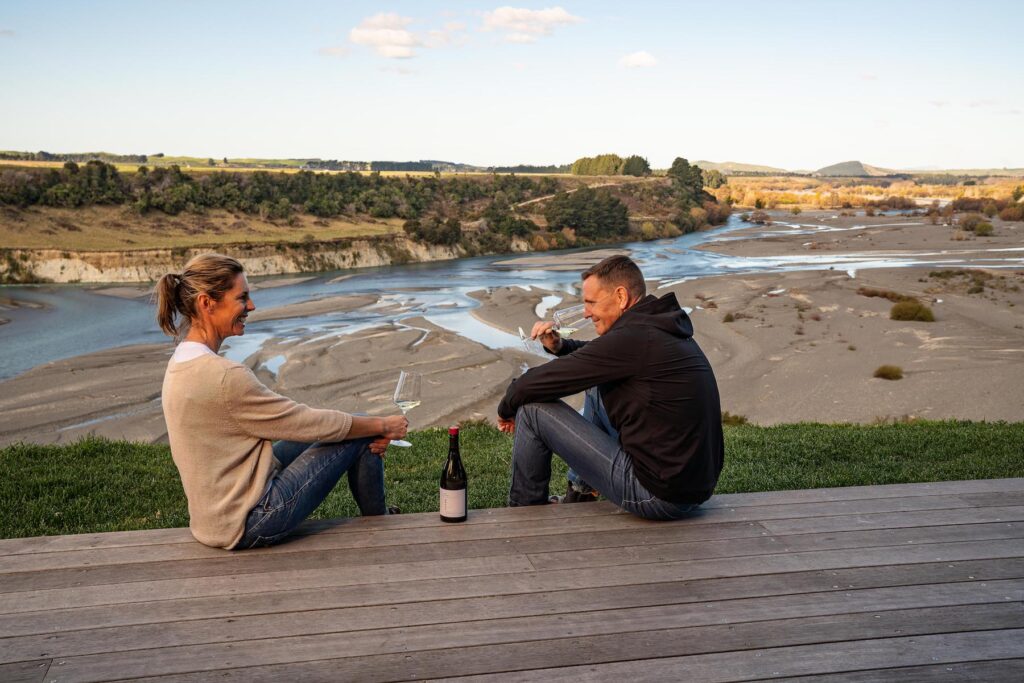
WF: Anything else up your sleeve – that you’ve got planned for the future?
RE: We’ve got a bit of a niche for ourselves with Chenin and Gamay and we’re not having to elbow our way to the front of the crowd to get attention for a Sauvignon or Pinot Noir… and that’s given us a bit of a foothold in the restaurant scene in Auckland and Wellington. And the other big part of our production is direct to consumer. I do think that with alternate varieties, the wine has to be good, regardless of what varietal name is on the bottle.
We also do a Two Terraces Gamay in addition to the Stone Aged Gamay that we bottle as that. So age in the barrel and more of a full representation of Ian’s vineyard. Red fruits but blue florals. This really exemplifies what we’re aiming for in terms of it’s got a horizontal element but there’s a depth element to it as well. I think too many Pinots in New Zealand, for example, rely on acidity for structure over tannin. And I like tannin and structure rather than acidity being the thing that is the mesh that holds the wine together.
WF: Do you not think that’s because of our Pinots though? You struggle to get the tannin structure a bit?
RE: Yes, I think it’s a climate thing in New Zealand. I think that cool climate preserves acidity. Sunshine instead of heat doesn’t generate a lot of tannin in the skins. Whereas you go to Burgundy and the great burgundies have got structure. It gets hot there.
I think it’s great though that Central has recognised that. That it’s not going to copy Burgundy per-se and it’s got to be it’s own thing. As you say, the climate suits what they are doing, as their own style. Especially amongst the guys that really know what they’re doing. Along that Bannockburn strip, and I like the slopes of Bendigo – what Rudi’s doing there. And Valli as well.
This is Syrah off our block. Clone selected from Baileys in Victoria, so pre-phylloxera vine material. Again, it’s 100% whole bunch fermented, basket-press, into two year old puncheons. I don’t believe New Zealand Syrah handles a lot of oak. When I’m judging in competitions the first thing you notice with Syrah is excessive oak. The whole point of New Zealand Syrah is the perfume, so we’ve got one new puncheon out of five.
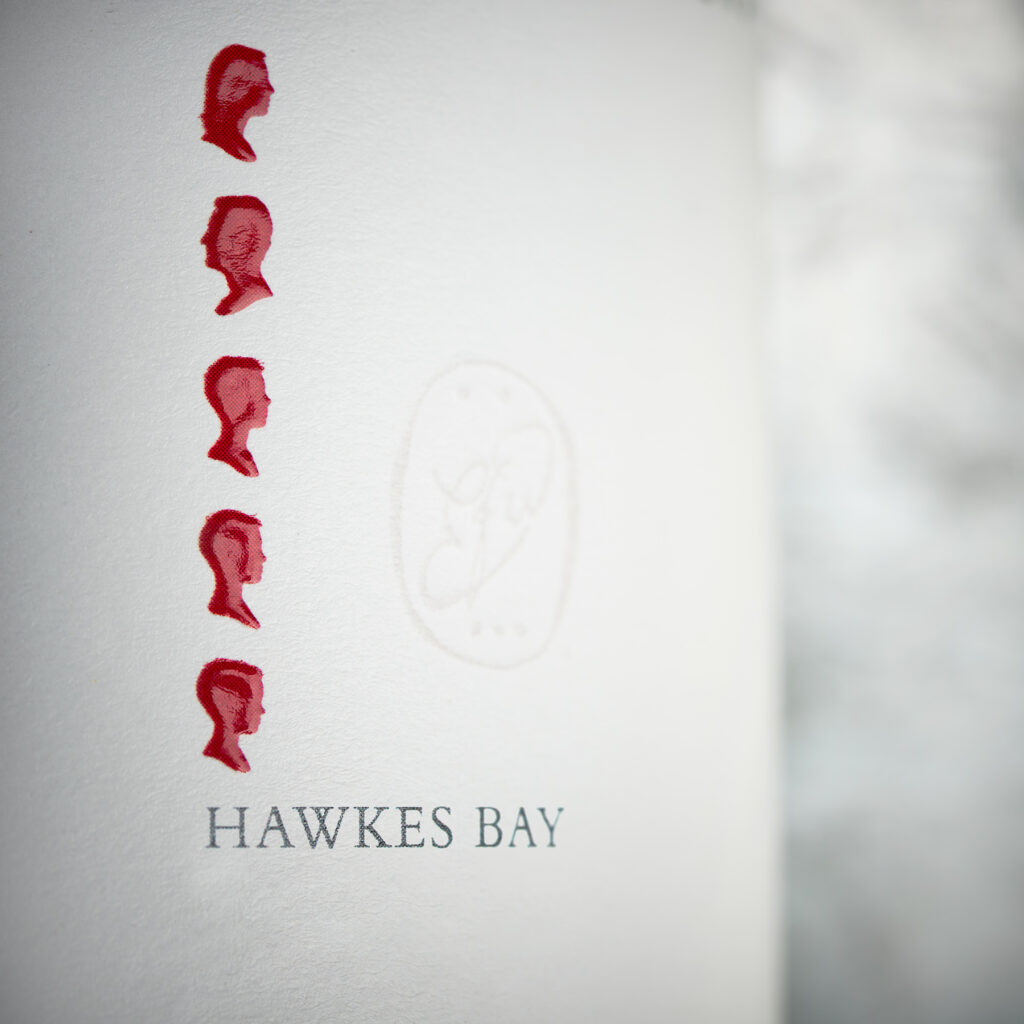
WF: Do you do much judging?
RE: Yes, I was Chair of the Hawke’s Bay Show. And judging at what used to be called the Air New Zealand Show, Easter Show etc that sort of thing as well.
I enjoy catching up with the people and judging is good for your palate. It’s a real blast for a few days and then you come back to your own wines afterwards with that muscle well and truly exercised and you can look at your own wines in a different way. It’s an imperfect process though – the only time there seems to be any unanimity is when the wine is so good it’s just unavoidable that it’s a unanimous Gold. But that’s a rare occasion. I would never be afraid of being an associate judge at a show if you got the chance because straightaway you’ll find that you’ve got three very experienced people on a panel and you think they are all going to be aligned – but it’s all over the place. And it becomes a lobbying game to persuade the others that its worth a second look. It’s a good system.
WF: I’ve heard it’s a great system. I’ve done some stewarding and that was fascinating alone!
RE: This is a different clone of Syrah – All Saints, also from a vineyard in Victoria, Australia. Tends to produce less pepper and positive herbs – much gooier, richer, plumier expression. For me if you do 100% whole bunch, the effect is actually much lower than if you do a portion. If you do a portion in a ferment, the action of that fermentation on those stems is much more aggressive. And when it’s 100%, there’s all these whole bunches that slowly squash and it’s almost academic that its whole bunch.
WF: That’s interesting because I’ve not heard anyone explain it like that. Of the people I’ve talked to about it, it does seem like the consensus is ‘go in boots and all’..
RE: Yes, you’ve got to be more than 50%. If you dabble, it’s a disaster, for me. Through all my experience in different wineries it’s always been ‘let’s try lots of different coopers, let’s try lots of different techniques, let’s try this that and the other’. All my hero wines from France are 100% whole bunch. My favourite Cooper is Chassin – so we’re 100% Chassin, and we’ve just followed this very linear route that produces something that ‘our house’ would be recognised for. And all our physical effort and thinking is in the vineyard, and this is just our lens on the wines.
WF: Another thing you could maybe explain to people reading this, is about tannins – how they sometimes go across or some go lengthwise. People can taste that, but can you, as an experienced winemaker, explain how that is? (laughs)
RE: I often refer to “line” a lot – and I’ll say to judges – if you’re quibbling about it being a Silver or a Gold, the difference is “line”. And “line” is back palate. Has it got true back palate, and not just the retro-nasal that you breathe afterwards, but does it have presence. And that sits at the back of the palate. For me the differentiator between good and great is always that element. And that’s where you spend a $100 on a bottle and you get that reward, in a very large glass over a long evening that’s continuous from front to back.
WF: it’s been a very interesting chat! I’m someone who thinks a lot about wine, and I don’t always even know how to frame the question, to find the answer, to what I’m considering in a wine.
RE: Andrew Jefford is the contemporary wine writer that I respect the most. His books for me are the best written since Hugh Johnson, in terms of constructing sentences that mean something. Hugh Johnson is more like Hemingway for me, in terms of being able to pack so much into so few words in a single sentence. Jefford just gets to the soul of wines, and as a winemaker I really connect with that. Jefford always talks about those things like what you get from good whole bunch, or those white wines have that pithy, almost bitter twist at the finish.
For me that takes it to a level of profundity, where everything alone is superficial – it’s fruit, it’s oak, it’s acidity, it’s this.. and the twist on the wine is where things become profound. And that’s the bit that may be troubling or annoying and makes you keep going back to the glass and just really think about the experience.

